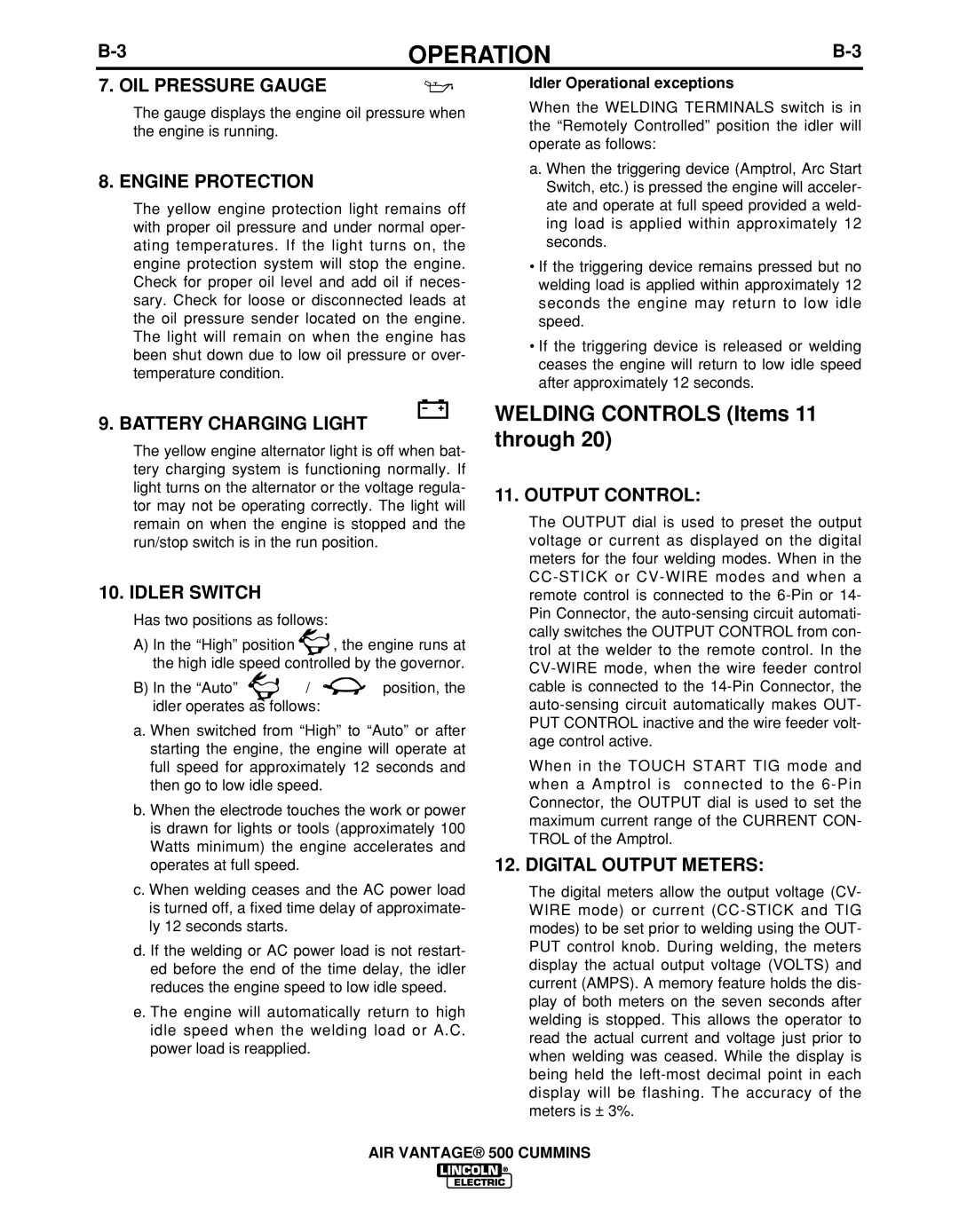
OPERATION | ||
|
|
|
7. OIL PRESSURE GAUGE
The gauge displays the engine oil pressure when the engine is running.
8. ENGINE PROTECTION
The yellow engine protection light remains off with proper oil pressure and under normal oper- ating temperatures. If the light turns on, the engine protection system will stop the engine. Check for proper oil level and add oil if neces- sary. Check for loose or disconnected leads at the oil pressure sender located on the engine. The light will remain on when the engine has been shut down due to low oil pressure or over- temperature condition.
9. BATTERY CHARGING LIGHT
The yellow engine alternator light is off when bat- tery charging system is functioning normally. If light turns on the alternator or the voltage regula- tor may not be operating correctly. The light will remain on when the engine is stopped and the run/stop switch is in the run position.
10. IDLER SWITCH
Has two positions as follows:
A)In the “High” position ![]() , the engine runs at the high idle speed controlled by the governor.
, the engine runs at the high idle speed controlled by the governor.
B) In the “Auto” | / | position, the |
idler operates as follows: |
| |
a. When switched from “High” to “Auto” or after starting the engine, the engine will operate at full speed for approximately 12 seconds and then go to low idle speed.
b. When the electrode touches the work or power is drawn for lights or tools (approximately 100 Watts minimum) the engine accelerates and operates at full speed.
c. When welding ceases and the AC power load is turned off, a fixed time delay of approximate- ly 12 seconds starts.
d. If the welding or AC power load is not restart- ed before the end of the time delay, the idler reduces the engine speed to low idle speed.
e. The engine will automatically return to high idle speed when the welding load or A.C. power load is reapplied.
Idler Operational exceptions
When the WELDING TERMINALS switch is in the “Remotely Controlled” position the idler will operate as follows:
a. When the triggering device (Amptrol, Arc Start Switch, etc.) is pressed the engine will acceler- ate and operate at full speed provided a weld- ing load is applied within approximately 12 seconds.
•If the triggering device remains pressed but no welding load is applied within approximately 12 seconds the engine may return to low idle speed.
•If the triggering device is released or welding ceases the engine will return to low idle speed after approximately 12 seconds.
WELDING CONTROLS (Items 11 through 20)
11. OUTPUT CONTROL:
The OUTPUT dial is used to preset the output voltage or current as displayed on the digital meters for the four welding modes. When in the
CC
When in the TOUCH START TIG mode and when a Amptrol is connected to the
12. DIGITAL OUTPUT METERS:
The digital meters allow the output voltage (CV- WIRE mode) or current
AIR VANTAGE® 500 CUMMINS
